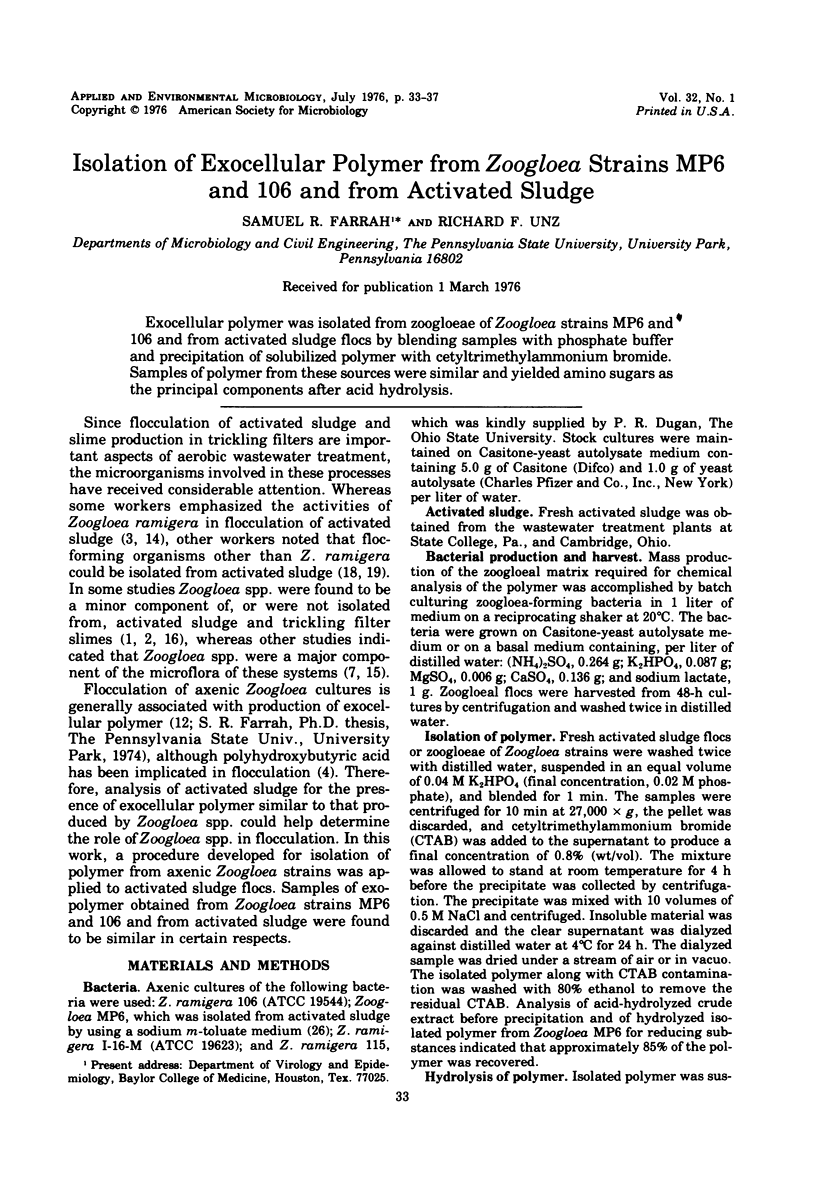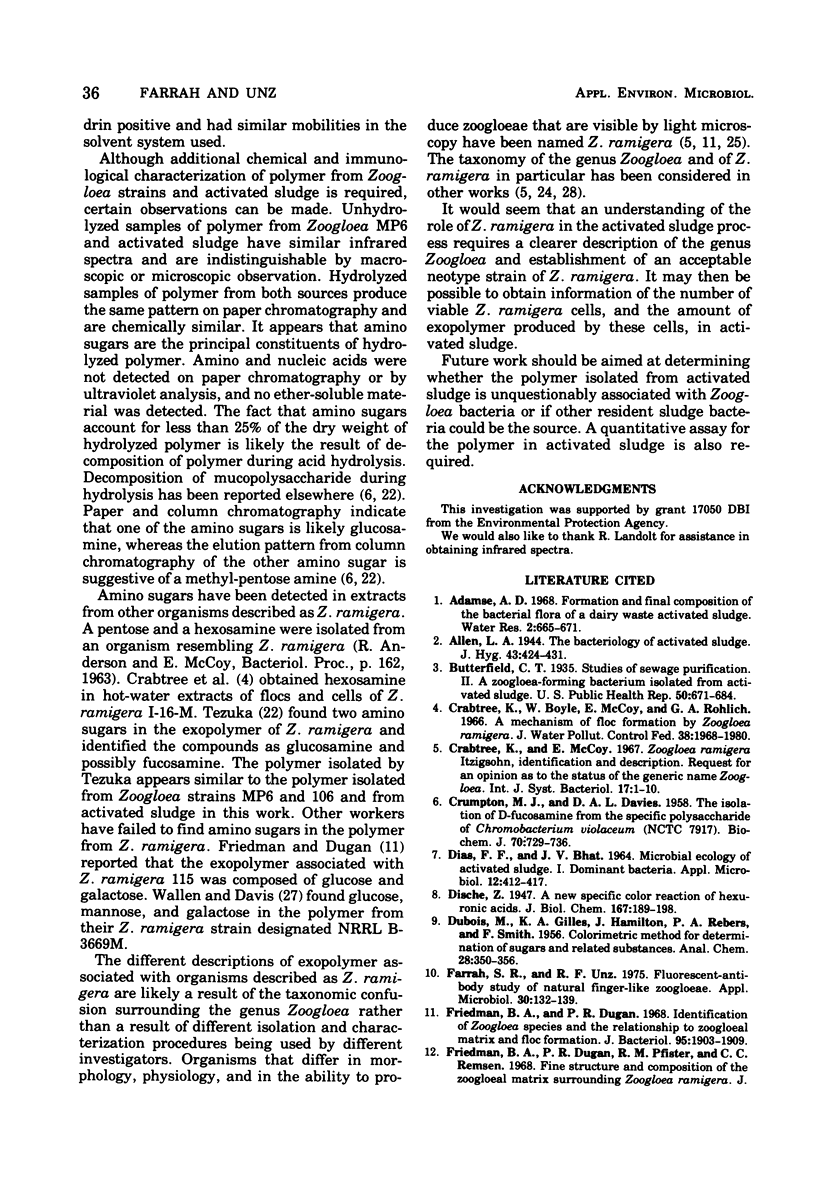Abstract
Exocellular polymer was isolated from zoogloeae of Zoogloea strains MP6 and 106 and from activated sludge flocs by blending samples with phosphate buffer and precipitation of solubilized polymer with cetyltrimethylammonium bromide. Samples of polymer from these sources were similar and yielded amino sugars as the principal components after acid hydrolysis.
Full text
PDF




Selected References
These references are in PubMed. This may not be the complete list of references from this article.
- CRUMPTON M. J., DAVIES D. A. The isolation of D-fucosamine from the specific polysaccharide of Chromobacterium violaceum (NCTC 7917). Biochem J. 1958 Dec;70(4):729–736. doi: 10.1042/bj0700729. [DOI] [PMC free article] [PubMed] [Google Scholar]
- Crabtree K., Boyle W., McCoy E., Rohlich G. A. A mechanism of floc formation by Zoogloea ramigera. J Water Pollut Control Fed. 1966 Dec;38(12):1968–1980. [PubMed] [Google Scholar]
- DIAS F. F., BHAT J. V. MICROBIAL ECOLOGY OF ACTIVATED SLUDGE. I. DOMINANT BACTERIA. Appl Microbiol. 1964 Sep;12:412–417. doi: 10.1128/am.12.5.412-417.1964. [DOI] [PMC free article] [PubMed] [Google Scholar]
- Farrah S., Unz R. F. Fluorescent-antibody study of natural finger-like zoogloeae. Appl Microbiol. 1975 Jul;30(1):132–139. doi: 10.1128/am.30.1.132-139.1975. [DOI] [PMC free article] [PubMed] [Google Scholar]
- Friedman B. A., Dugan P. R. Identification of Zoogloea species and the relationship to zoogloeal matrix and floc formation. J Bacteriol. 1968 May;95(5):1903–1909. doi: 10.1128/jb.95.5.1903-1909.1968. [DOI] [PMC free article] [PubMed] [Google Scholar]
- Friedman B. A., Dugan P. R., Pfister R. M., Remsen C. C. Fine structure and composition of the zoogloeal matrix surrounding Zoogloea ramigera. J Bacteriol. 1968 Dec;96(6):2144–2153. doi: 10.1128/jb.96.6.2144-2153.1968. [DOI] [PMC free article] [PubMed] [Google Scholar]
- HAMMOND J., Jr Maintenance of grafted rabbit luteal tissue. Nature. 1952 Feb 23;169(4295):330–331. doi: 10.1038/169330b0. [DOI] [PubMed] [Google Scholar]
- McKINNEY R. E., WEICHLEIN R. G. Isolation of floc-producing bacteria from activated sludge. Appl Microbiol. 1953 Sep;1(5):259–261. doi: 10.1128/am.1.5.259-261.1953. [DOI] [PMC free article] [PubMed] [Google Scholar]
- TREVELYAN W. E., PROCTER D. P., HARRISON J. S. Detection of sugars on paper chromatograms. Nature. 1950 Sep 9;166(4219):444–445. doi: 10.1038/166444b0. [DOI] [PubMed] [Google Scholar]
- Unz R. F., Dondero N. C. The predominant bacteria in natural zoogloeal colonies. I. Isolation and identification. Can J Microbiol. 1967 Dec;13(12):1671–1682. doi: 10.1139/m67-217. [DOI] [PubMed] [Google Scholar]
- Unz R. F., Farrah S. R. Use of aromatic compounds for growth and isolation of Zoogloea. Appl Microbiol. 1972 Mar;23(3):524–530. doi: 10.1128/am.23.3.524-530.1972. [DOI] [PMC free article] [PubMed] [Google Scholar]


